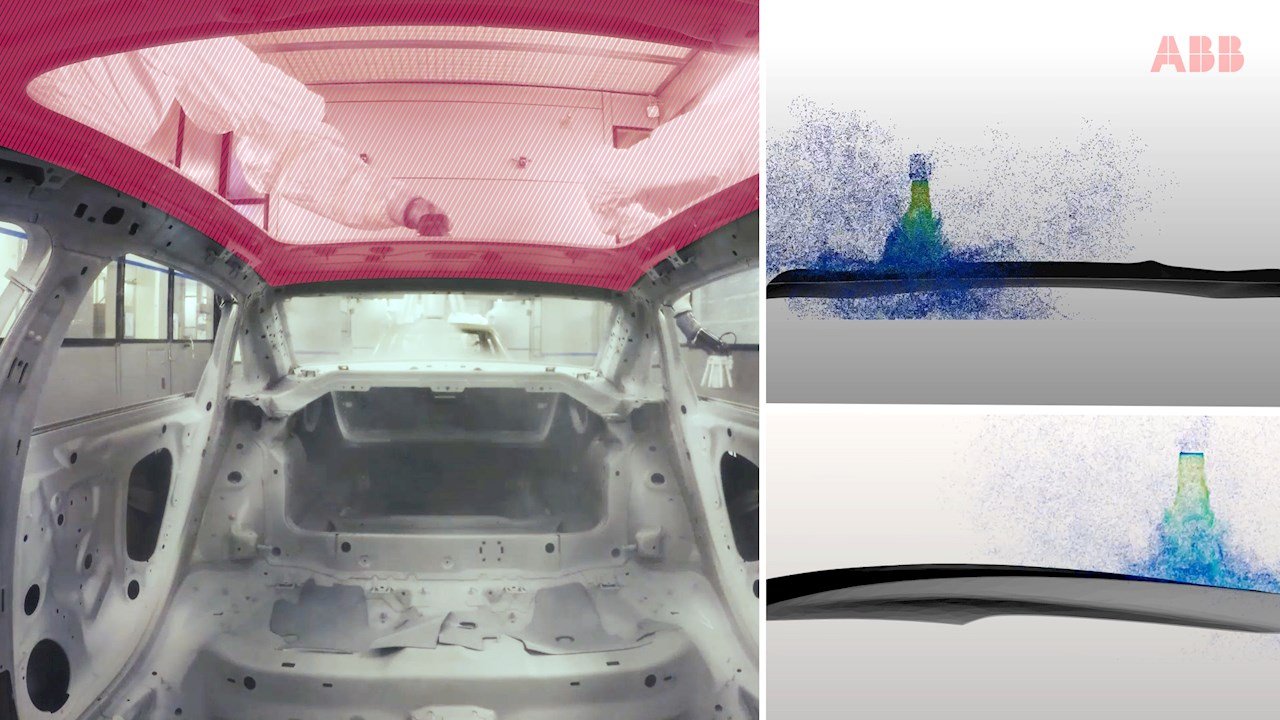ABB invests in Engineering Software Steyr (ESS) to reduce costs and emissions for automotive paint shops
Collaboration with Engineering Software Steyr GmbH (ESS), a leading provider of precision paint shop simulation software will develop cutting-edge algorithms that simulate dust and droplet behavior, heat transfer, and fluid flows
Software to eliminate need for prototyping, accelerate commissioning by up to a month and reduce costs in paint shop operations by up to 30%
ABB has entered into a strategic collaboration with Austria-based Engineering Software Steyr GmbH (ESS) to develop powerful simulation tools that will transform automotive paint shop operations while reducing costs by up to 30 percent. As part of the collaboration, ABB will take a minority investment in ESS. Financial details of the investment were not disclosed.
“Delivering faster and more energy efficient solutions for the paint process is the final piece of the puzzle in digitalizing the manufacturing transition in the automotive industry,” said Marc Segura, President, ABB Robotics division. “The innovative solutions we are developing with ESS will cut vehicle development time by up to a month and generate cost savings of up to 30 percent, making manufacturers more competitive, efficient and resilient. Using the solution, a manufacturer producing 300,000 vehicles has the potential to cut CO2 emissions by nearly 17,000 tons* annually – equivalent to flying an airliner around the Earth 19 times**.”
A typical automotive paint shop process consists of more than 20 individual steps, from degreasing and electrocoating to sealing, spraying and baking. Each step is subject to a variety of parameters – such as material viscosity, adhesion, and drying time – that must be tested and optimized before series production of a new model can begin. Traditionally, it can be expensive and time consuming to perform each task.
“We recognize how crucial it is for all players — large, medium and small companies — to have access to the right digital tools for innovation, said Dr. Martin Schifko, CEO, ESS. “Currently, the complexity of such tools in the market makes it difficult for smaller companies to leverage the power of digital. We're committed to leveling the playing field by making the simulation tech accessible to all manufacturers. With our solutions, they can innovate faster, reduce environmental impact, and stay competitive in a demanding industry.”
The partnership will also enable customers to benefit from ABB Robotics’ extensive expertise within the automotive paint shop and their success with smart automation solutions such as PixelPaint, an inkjet-style vision-controlled paint head that reproduces precise details, and the RB1000i-S digitally-enabled atomizer that achieves up to 99 percent transfer efficiency, meaning less paint and materials are required.
ABB will integrate ESS’s technology into ABB’s RobotStudio®, the world’s most popular offline programming and simulation tool for robotic applications, available on desktop, cloud and AR platforms.
* ABB/ESS internal analysis with 100kWh energy saving at typical energy mix plus 2.8kg waste and overcoating reduction per vehicle body for a total saving of 16,860 tons of CO2 per annum assuming annual production of 300,000 vehicles.
** Calculation assumes 250-seat Boeing 787-8 with industry average emissions of 142.25g per mile per seat (IBA analysis).
ABB is a global technology leader in electrification and automation, enabling a more sustainable and resource-efficient future. By connecting its engineering and digitalization expertise, ABB helps industries run at high performance, while becoming more efficient, productive and sustainable so they outperform. At ABB, we call this ‘Engineered to Outrun’. The company has over 140 years of history and more than 105,000 employees worldwide. ABB’s shares are listed on the SIX Swiss Exchange (ABBN) and Nasdaq Stockholm (ABB). www.abb.com
ESS is a producer of cutting-edge hybrid simulation software and a specialist in automating the pre-processing step of meshing. We use the latest scientific findings to solve complex industrial problems. Our hybrid methods combine mesh-free and grid-based methods to provide tools to analyze and optimize paint shops. Our headquarters are situated in Steyr, Austria, where over 40 people from nearly 20 different nations work tirelessly on the future of simulation. We also have subsidiaries in Poland and India. www.essteyr.com
